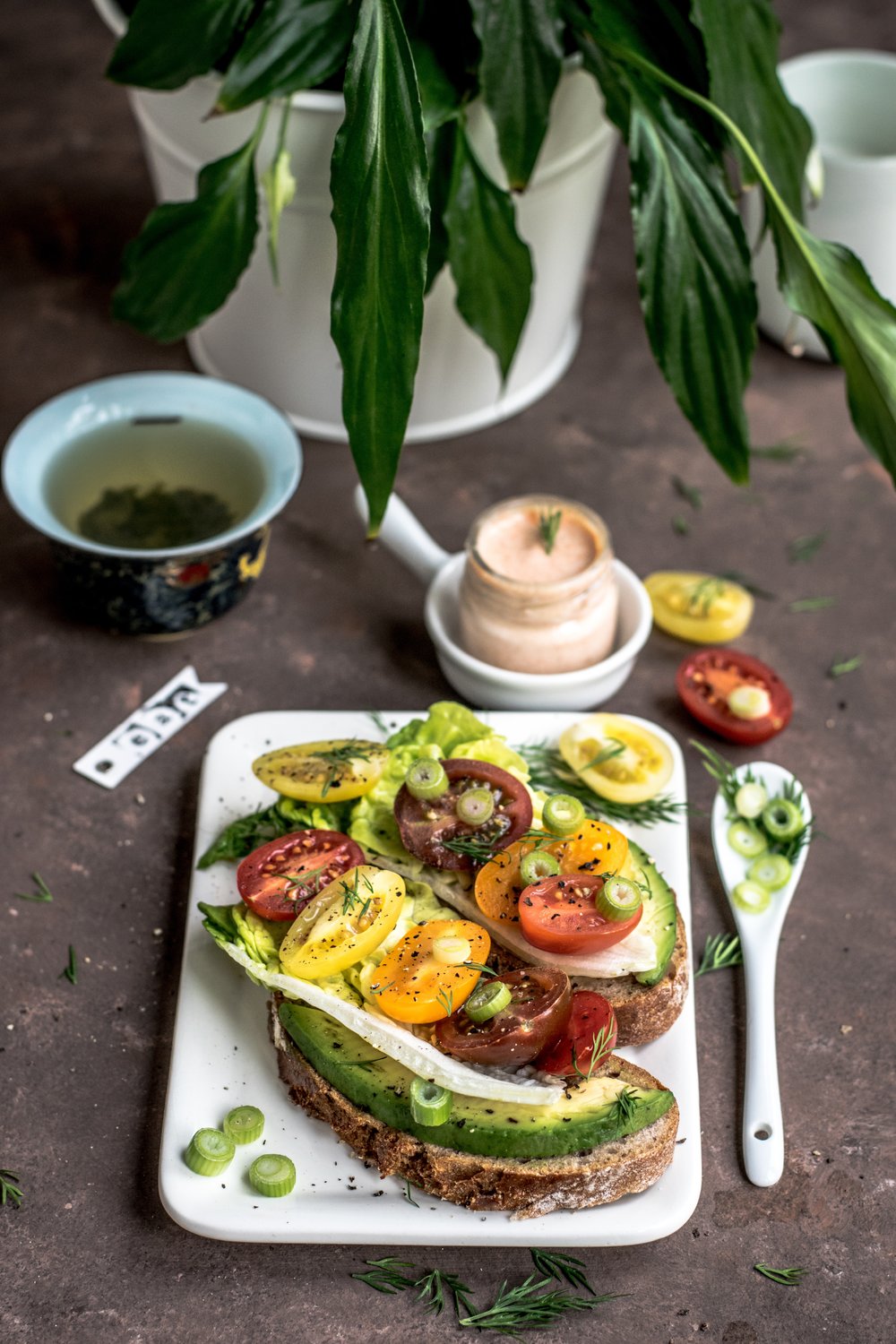Sometimes all it takes is a dash or a pinch to take a dish’s or sauce’s flavor to the next level. We love busting the myth that corporate lunches have to be bland, boring or unhealthy. Using fresh ingredients, including herbs, our chefs craft delicious and healthy office lunches for our clients.
Herbs play a major role in your making your lunches tasty week in and week out. These five that our chefs love show up in many of our dishes, particularly in marinades and dressings. Discover why they’re great and how you can use them in your own dishes.

1. Cilantro
If you get an authentic street taco, you can expect to find plenty of cilantro on top of it. Though cilantro is known for its role in Mexican dishes, it’s also popularly used in Vietnamese dishes. We use it in our banh mi marinade, as well as a topping on the toppings bar.
Flavor profile: As part of the parsley family, cilantro tastes citrusy and carries a hint of parsley flavor.
How to use it: Cilantro is usually added to dishes before serving because cooking heat diminishes its flavor. Use the leaves in your recipe. If you want a stronger cilantro flavor, you can use the stems since they have a more potent flavor. Pair this herb, chopped, with lime juice to create a light dressing for corn and bean salads or mix it with other herbs like oregano and parsley to make a meat marinade for roasted chicken.
2. Basil
Basil isn’t limited to pesto. It’s actually extremely versatile. We love using it to add zing to our basil vinaigrette, which is made with basil, parsley and white balsamic vinegar. Though there are different types of basil, we’ll focus on sweet basil, since you’ll be using this variation most of the time.
Flavor profile: A member of the mint family, basil has a sweet flavor.
How to use it: One of basil’s perfect pairs is tomatoes. Add some to your favorite tomato sauce recipe to help cut the acidity of the tomatoes and boost their sweetness. Like cilantro, basil will lose its flavor when heated, so you can use it as a topper for pasta or pizza instead of cooking with it. Today, too, you’ll find basil paired with fruity desserts. Toss a few leaves in a bowl with your strawberries and let it sit for about 15 minutes before incorporating the berries in shortcakes or ice cream.
3. Rosemary
A little bit of this powerful herb goes a long way. We love using rosemary to complement our roasted chicken — which is one of the most popular ways to use this woody herb — as well as roasted potato wedges.
Flavor profile: Rosemary has a distinct piney and peppery flavor.
How to use it: “Less is more” is good rule of thumb when it comes to rosemary, especially because its flavor will become stronger the more it cooks. Rosemary pairs great with garlic, which makes it a great herb for roasted chicken, pork and cauliflower seasoned with garlic. You can also add a small spring to your tomato sauces to give them that distinct Italian kick.
4. Thyme
Though dried thyme may look like dried rosemary, it has a completely different flavor profile. Fresh thyme was used for our menu on the cacio e pepe, and the marinade for our lemon and garlic chicken also had thyme in addition to rosemary.
Flavor profile: Thyme has a more mellow flavor than rosemary. As a member of the mint family, it carries a minty and lemony flavor.
How to use it: Combine olive oil, lemon, garlic and mix thyme with other Mediterranean spices like rosemary, oregano and sage for a delicious marinade. Finely chop the leaves and add them to your stews or chowders right before serving to add tang.
5. Mexican Oregano
This isn’t the oregano you’d usually pair with basil and rosemary for a killer pasta sauce. That’s Mediterranean oregano. This one, as its name suggests, has a flavor that pairs well with the spices and flavors of Mexican cuisine. We used it in our cilantro garlic ranch.
Flavor profile: Mexican oregano is a little stronger than its Mediterranean counterpart. It’s also more citrusy and lemony.
How to use it: This is a great one to add to salsa, mole sauces and Mexican-inspired dishes like tacos. It pairs particularly well with cumin, chiles and paprika. Though it can be tricky to find in typical grocery stores, try visiting your local Latin market to find this variation.
